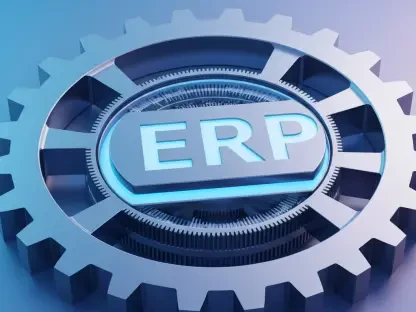In today’s data-driven world, effective data visualization is key to transforming raw data into actionable insights. Anand Naidu, known for his expertise in both frontend and backend development, shares his perspectives on how enterprises can leverage data visualization to enhance decision-making across the data lifecycle.
What is the importance of data visualization in unlocking the value from enterprise data?
Data visualization is critical as it enables IT leaders to see and understand the patterns, trends, and anomalies in the vast amounts of data enterprises generate. It’s the bridge between raw data and actionable insights, helping teams to quickly decipher information and make informed decisions.
What are some common roadblocks enterprises face with data visualization?
Enterprises often encounter issues like data silos, which keep vital information stuck in separate systems, and integration complexities, which can make data visualization incomplete or misleading. Without overcoming these roadblocks, decision-making can be significantly hindered.
How can data visualization tools help overcome data silos and integration complexities?
Tools that offer seamless integration capabilities are instrumental in overcoming these challenges. They provide a unified view of data, allowing enterprises to connect and visualize data across different sources without needing to move or duplicate it, which can also reduce security risks.
What steps can IT leaders take to transform raw data into actionable insights using data visualization tools?
IT leaders should focus on choosing data visualization tools that are easy to use, integrate seamlessly with existing systems, and enable collaboration across teams. By doing so, they can ensure that data is accessible and actionable from numerous touchpoints throughout its lifecycle.
How does enabling self-service analytics across an organization impact the data lifecycle?
Self-service analytics empower more individuals within an organization to access and act on data. This democratization not only speeds up decision-making but also ensures that insights are generated from a diverse array of perspectives, fueling innovation and efficiency.
Why is it important for data visualization tools to be accessible to a broad range of users, not just analysts or data scientists?
When data visualization tools are accessible to a wide range of users, they facilitate a culture of data literacy and engagement across the organization. This democratization ensures that every department can leverage insights to optimize their functions and contribute to the enterprise’s goals.
What are some features that make data visualization tools easy to use?
User-friendly tools often boast intuitive interfaces, such as drag-and-drop functions, and incorporate AI to guide users in creating meaningful visualizations. These features lower the entry barrier, enabling users with varying levels of technical expertise to generate insights.
How do integrated security and governance enhance collaboration in data visualization?
With integrated security and governance, users can collaborate freely and securely without worrying about unauthorized access or data breaches. This ensures that sensitive information is protected while fostering an environment where transparent data usage is thriving.
What challenges do enterprises face when managing data across hybrid cloud environments?
Hybrid cloud environments involve a mix of on-premises and various cloud-based systems, complicating data management. Each environment may have different protocols and needs, creating a challenge for seamless data integration and governance without compromising agility.
How can data visualization tools ensure seamless integration across diverse environments like on-premises systems and cloud services?
Effective data visualization tools are built to operate across both on-premises and cloud systems, providing a cohesive experience. They are equipped for out-of-the-box integration, allowing enterprises to harness data from multiple sources without additional cumbersome processes.
Why is it advantageous for data visualization tools to work out-of-the-box without extra integration?
Out-of-the-box solutions save time and resources, eliminate complexities, and allow teams to start analyzing data immediately. This agility is crucial in fast-paced business environments where timely insights can have significant impacts.
How do native integration and centralized data storage help with user access and governance?
Native integration reduces the need for duplicating processes across various tools, while centralized data storage prevents data fragmentation. This setup enhances security and ensures consistent governance policies, making user access streamlined and reliable.
Why is delivering real-time insights an important capability for data visualization tools?
Real-time insights enable enterprises to respond to changes in the business environment swiftly, whether it’s capitalizing on new opportunities or mitigating potential risks. This timeliness can be a competitive edge in today’s fast-paced market.
What are the benefits of natural language querying in data visualization?
Natural language querying allows users to interact with data using conversational language, making data exploration more intuitive and less daunting. This feature democratizes data access, breaking down barriers that traditionally limit user engagement.
How does automated reporting benefit business users in terms of data visualization?
Automated reporting streamlines the update process for data visualization dashboards, ensuring they reflect the most current data. This saves time for business users, allowing them to focus more on interpreting the data rather than managing it.
How can data visualization tools bring together and drive augmented analytics across various data sources?
These tools aggregate data from various sources into a single interface, enriching the analytical capabilities with diverse visual analytics. This integrated approach fosters comprehensive insights that consider multiple data dimensions and perspectives.
What role does data visualization play in building trust and confidence in analytical outputs and machine learning models?
Visualization makes complex data and results more understandable, fostering greater transparency. When users can see the underlying data and logic of models, trust naturally builds, leading to higher confidence in decisions based on those analytics.
Why is a true hybrid approach important for enterprises adapting their data management and infrastructure?
A hybrid approach offers flexibility, allowing enterprises to efficiently manage data across different systems and infrastructures. This adaptability is significant for scalability and resilience, ensuring businesses can meet future demands and technological advancements.
What makes Cloudera’s data visualization capabilities stand out in the market?
Cloudera’s capabilities shine through their integration of intuitive interfaces, scalability, and security, all designed to transform data into insights swiftly and effectively. Their solutions offer a balance of power and simplicity, catering to diverse business needs.
How can enterprises operationalize insights gained from data visualization tools across their business?
By embedding these insights into their strategic planning and execution processes, enterprises can ensure that data-driven decisions inform operations, product developments, and competitive strategies, fostering a culture of continuous improvement and innovation.









